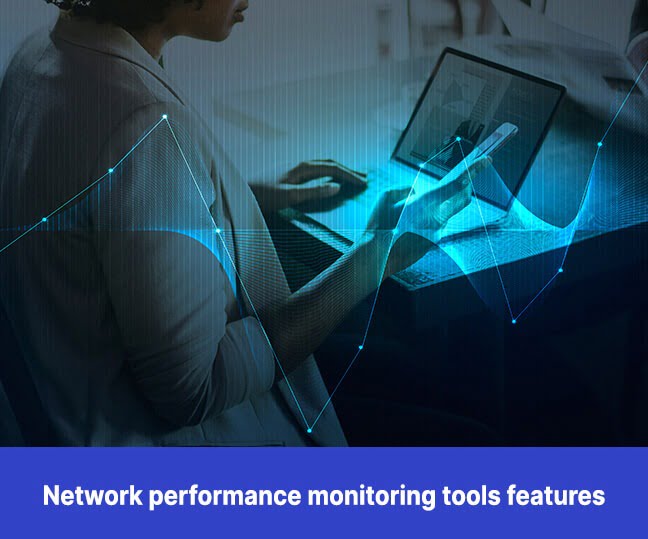Using network management tools, administrators monitor and control a network. A network is monitored for any ongoing performance or fault issues. Because networks are complex, administrators rely on such automated solutions.
Why are network performance monitoring tools important?
Performance monitoring is an everyday activity for network administrators. Identifying bandwidth utilization, network congestion, availability, uptime, and latency is a per second activity. Depending on these parameters, network performance is tuned accordingly. But manually doing such tasks is out of the question. Purely because it is impossible to manage not a few hundreds, but thousands of network elements using manual techniques.
Here is where network monitoring tools come to the fore. A one-time configuration is all that is required to get the entire system setup. Newer technologies such as SDN (Software Defined Networking) allow the configuration of network elements from a centralized location. It helps administrators scale their activities without incurring additional overheads.
What would happen if there were no network performance monitoring tools?
Bandwidth management
Internet Service Provider companies want to purchase bandwidth they need. They do not wish to spend extra for more. Wasted bandwidth is expensive. Not only for ISPs but for enterprises as well. Network performance monitoring tools help identify the required bandwidth.
Productivity losses
Bad network speed affects performance. It could be because of lack of effective congestion management. A good network performance monitoring tool helps reroute traffic as per network conditions. This prevents network speed issues, loss of network, lack of bandwidth etc.

Data loss
Data can be lost in transit if the network is not tuned for performance. A network that is well-monitored is able to automatically respond to problems such as congestion. So, there is no risk of data loss because of network congestions. Network performance monitoring software can also detect intrusion attacks such as DDoS. It helps a network identify network spoofing and prevents the network from being sabotaged.
What are the features of network performance monitoring tools?
Device discovery
Network performance monitoring tools automatically discover new hosts and network devices. There is no requirement of any manual intervention in this process. Devices can logon to a network, and receive an identity. They can cross-over to other network domains without losing this identity. All of these use cases and more are handled by network performance monitoring tools.
Alerts and notifications
When there is an intrusion from an unidentified source that is sending spoof packets, the system generates an alert or notification. Network performance monitoring tools currently use a combination of artificial intelligence and machine learning too. Using these technologies networks can adapt to varying externalities.
Real time reporting
Network performance monitoring tools can use real-time analytics to perform on-the-fly reporting. Many of these tools use cloud services in tandem to achieve real time reporting. The reports can further be analyzed by bots to produce actionable insights. Reports can be customized dynamically based on configuration.
Custom dashboards
Network performance monitoring tools have custom dashboards that display real-time and historical reports. Dashboards that integrate with a network performance manager also display real-time activity in the network. The representation of the data can be in the form of line-charts, bar graphs, pie-charts, bar charts, histograms, scatter diagrams etc. Some dashboards can be as sophisticated as interpreting voice commands to relay the commands to the network performance monitoring system.
Network security
Auditing and applying security compliance updates go hand-in-hand. Network performance monitoring tools can audit processes, data, devices, licenses etc. The tools can also remediate and rectify any compliance issues.
Conclusion
Network performance monitoring tools are in a state of evolution. Tomorrow’s tools will be vastly different from today’s. But organizations have to get started on this journey. Better late than never, then never!



















